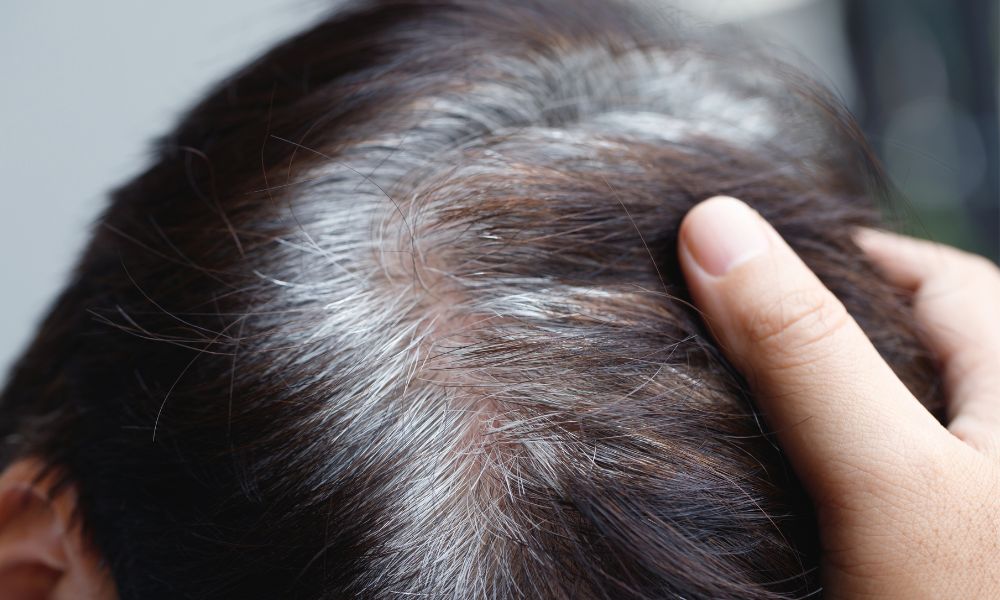
Going Grey Too Soon? Here’s Why It Happens (What You Can Do About It?)
Spotting that first grey hair in your early 20s (or even late teens) can be unsettling — especially when you thought you had years before the salt-and-pepper phase set in. But you’re not alone. Premature greying is becoming increasingly common, and it’s not always just “part of ageing.”
So what’s really going on?
Let’s break it down.
What Is Premature Greying?
Hair greying is a natural part of ageing, but when it starts before the age of 25, it’s considered premature. It usually begins at the temples or the crown, with a few strands, and gradually progresses.
Why Does Hair Turn Grey?
Hair gets its colour from melanin, the pigment produced by cells called melanocytes located in the hair follicle. As we age, melanin production slows down, leading to loss of pigment — hence, grey or white hair.
In premature greying, this process gets accelerated due to multiple reasons, including:
1. Genetics – The Biggest Player
If your parents or grandparents started greying early, there’s a good chance you might too. Your genes play a huge role in determining when melanin production begins to decline. In fact, genetics is one of the strongest predictors of when you’ll go grey.
2. Stress – The Trigger Button
Chronic stress doesn’t directly “turn your hair white overnight,” but it can affect your body in ways that speed up cellular ageing, including melanocyte damage. Stress leads to oxidative stress in your body, which may deplete pigment-producing cells earlier than usual.
3. Nutritional Deficiencies
Lack of essential nutrients like:
- Vitamin B12
- Folate
- Iron
- Copper
- Zinc
…can all contribute to premature greying. These nutrients are important for maintaining healthy melanocyte function and pigment production.
4. Oxidative Stress and Free Radicals
Your body naturally produces free radicals — unstable molecules that can damage cells. When there’s an imbalance between free radicals and antioxidants, it leads to oxidative stress, which accelerates greying. Pollution, smoking, poor sleep, and poor diet can worsen this imbalance.
5. Autoimmune or Thyroid Disorders
Conditions like vitiligo or thyroid dysfunction can also interfere with melanin production, leading to early greying. If your greying is accompanied by other symptoms like hair fall, fatigue, or skin changes, a medical evaluation is a must.
6. Lifestyle and Environmental Factors
Frequent use of harsh shampoos, chemical treatments, smoking, and exposure to environmental toxins can all weaken the hair follicle environment, potentially contributing to early pigment loss.
Can You Reverse Premature Greying?
In most cases, genetic greying is not reversible, but if your greying is linked to:
- Nutritional deficiencies
- Stress
- Lifestyle choices
…then managing those factors may help slow the process and preserve existing pigment.
Tips to Delay Further Greying
- Include antioxidant-rich foods in your diet — berries, leafy greens, nuts, seeds
- Ensure adequate B12, iron, and folate intake — either through food or supplements
- Manage stress with yoga, meditation, regular exercise
- Get thyroid and vitamin levels tested if you suspect a deficiency
- Avoid smoking and overuse of hair chemicals
Final Thoughts
Greying early doesn’t mean you’re unhealthy — but it’s worth exploring the underlying causes, especially if it starts before 25.
With the right care, nutrition, and lifestyle changes, you can slow down further greying and keep your hair healthier for longer.